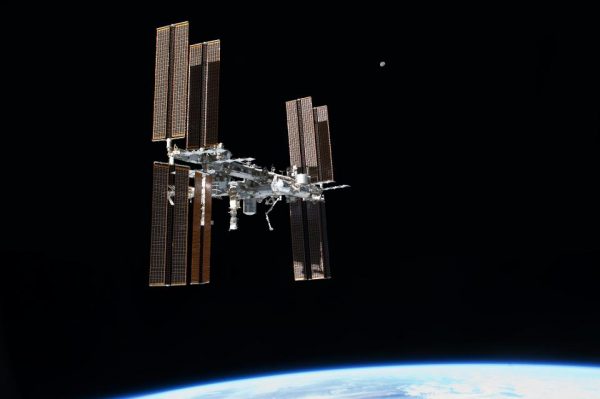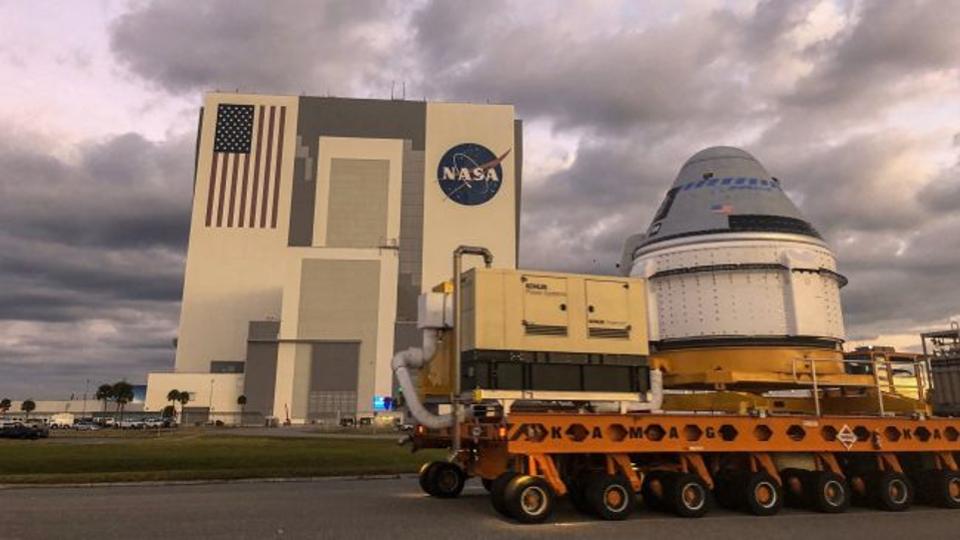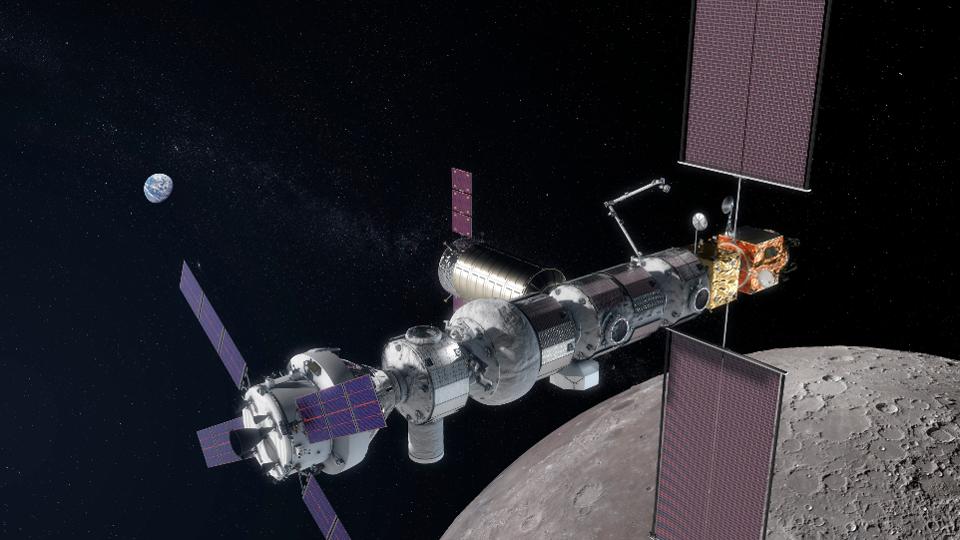International Space Station Commercialization Heralds A New Era For Human Spaceflight – Forbes

STS-135 final flyaround of ISS This picture of the International Space Station was photographed from … [+] the space shuttle Atlantis as the orbiting complex and the shuttle performed their relative separation in the early hours of July 19, 2011. Onboard the station were Russian cosmonauts Andrey Borisenko, Expedition 28 commander; Sergei Volkov and Alexander Samokutyaev, both flight engineers; Japan Aerospace Exploration astronaut Satoshi Furukawa, and NASA astronauts Mike Fossum and Ron Garan, all flight engineers. Onboard the shuttle were NASA astronauts Chris Ferguson, STS-135 commander; Doug Hurley, pilot; and Sandy Magnus and Rex Walheim, both mission specialists.
NASA/Wikimedia Commons
Earlier this week, NASA announced that it would purchase seats on commercially organized missions to the International Space Station (ISS) by 2024. Though NASA is expected to release a request for proposals (RFP) for any interested providers to submit bids in early 2020, the likely frontrunners to provide this service are the two companies NASA has already contracted for ISS human spaceflight services: SpaceX and Boeing. The seats purchased on these private missions would be in addition to the test flights and operational missions NASA has already contracted through its Commercial Crew Program. In contrast with “normal” NASA ISS missions with a duration of approximately 6 months, these commercial passenger flights will include an ISS stay of no longer than 30 days.
This announcement is the latest in a series of moves by NASA to open the ISS up for commercialization, as the U.S. government attempts to renew agency focus on missions beyond low-Earth orbit (LEO). The International Space Station (ISS) has been the exclusive destination of government-sponsored astronauts for almost two decades now, and has been continuously inhabited by humans since 2000. Roughly the size of a football field, the ISS orbits the Earth in LEO at an altitude of approximately 400 kilometers and provides a microgravity and space environment research laboratory for crew members to conduct experiments in biology, physics, and astronomy, among other fields. Funding for the laboratory is provided by its participating countries, which include the U.S., Russia, Japan, Canada, and member states of the European Space Agency. Russia’s ROSCOSMOS has been the sole provider of human transportation services to the ISS since the Space Shuttle’s final mission in 2011, although NASA’s Commercial Crew Program expects both SpaceX and Boeing to be able to launch humans to the ISS in 2020.

Boeing’s first CST-100 Starliner capsule seen in front of the Vehicle Assembly Building at NASA’s … [+] Kennedy Space Center as it began its journey on Nov. 21, 2019, to Cape Canaveral Air Force Station for its first uncrewed launch.
NASA
The Trump administration initially sought to completely withdraw U.S. funding for the laboratory by 2024, a proposal that was met with criticism from some top NASA officials who argued that astronaut safety could be compromised by the program’s early termination. The ISS’s planned end date was originally 2028, after which the Station would either be taken over by a commercial entity or deconstructed and removed from service. As NASA’s current annual budget for use and maintenance of the ISS is over $3 billion USD, the feasibility of a complete takeover by a commercial entity has been called into question. However, allowing private astronauts onboard the U.S. segment before the Station’s decommissioning would still represent a marked increase in U.S. government support for commercial human spaceflight. In December 2018, the Leading Human Spaceflight Act was passed, extending operation of the ISS until 2030.
By commercializing the ISS, the Trump administration looks to enable continued U.S. human presence in space while freeing up NASA resources for deep space exploration, such as missions to the planned Lunar Orbital Platform – Gateway. In late 2017, the Trump administration issued Space Policy Directive-1, stating that “Beginning with missions beyond low-Earth orbit, the United States will lead the return of humans to the Moon for long-term exploration and utilization, followed by human missions to Mars and other destinations.” The Lunar Orbital Platform – Gateway is a proposed space station in lunar orbit that is intended to serve as a communications hub, science laboratory, short-term human habitation module, and holding area for rovers and robots. Once built, this new Station would be a major component of NASA’s Artemis program, which plans to use the Space Launch System (SLS) rocket and Orion spacecraft to send crew to the lunar south pole region by 2024. Accomplishment of this feat would constitute a major milestone towards returning human presence to the Moon, which saw its last human visitor in 1972.

Artist’s concept of the updated configuration of the Lunar Orbital Platform-Gateway, as found on the … [+] HEOMD presentation of September 6, 2018.
NASA/Wikimedia Commons
Of note, the Trump administration is hardly the first U.S. presidential administration to set its sights beyond LEO. Upon the 20th anniversary of the Moon landing in 1989, George H.W. Bush announced the Space Exploration Initiative, which called for the construction of Space Station Freedom, establishment of permanent presence on the Moon, and a crewed mission to Mars. The price tag of this endeavor was estimated at $500 billion over 20 to 30 years, and the initiative was never implemented due to lack of support from Congress. Later, Bush’s son George W. Bush announced the retirement of the Space Shuttle Program and funding for a new Constellation Program to the Moon. The Constellation program was later canceled by George W. Bush’s successor, Barack Obama, and replaced with plans for a human mission to an asteroid.
The Obama administration was the first in U.S. history to invest in commercial human spaceflight with its backing of the NASA Commercial Crew Program as part of the American Recovery and Reinvestment Act (ARRA) of 2009. By moving towards commercialization of the ISS, the Trump administration appears to be building on the initial groundwork laid by Commercial Crew for further space commerce activities while simultaneously pursuing its own agenda for deep space exploration.
As of today, the timeline for NASA’s Artemis program calls for landing a man or woman on the Moon by 2024, which would coincide with the agency’s timeline for purchasing shorter-duration commercial flights. That said, human spaceflight development programs are notoriously prone to significant delays, suggesting that even with continued funding, the 2024 date for an Artemis launch may be at risk. Still, if the agency continues down its current path, the next decade could be an exciting time for the U.S. space program. For the first time in history, NASA could be sending astronauts to two very different destinations at once: Lunar orbit, and low-Earth orbit.






